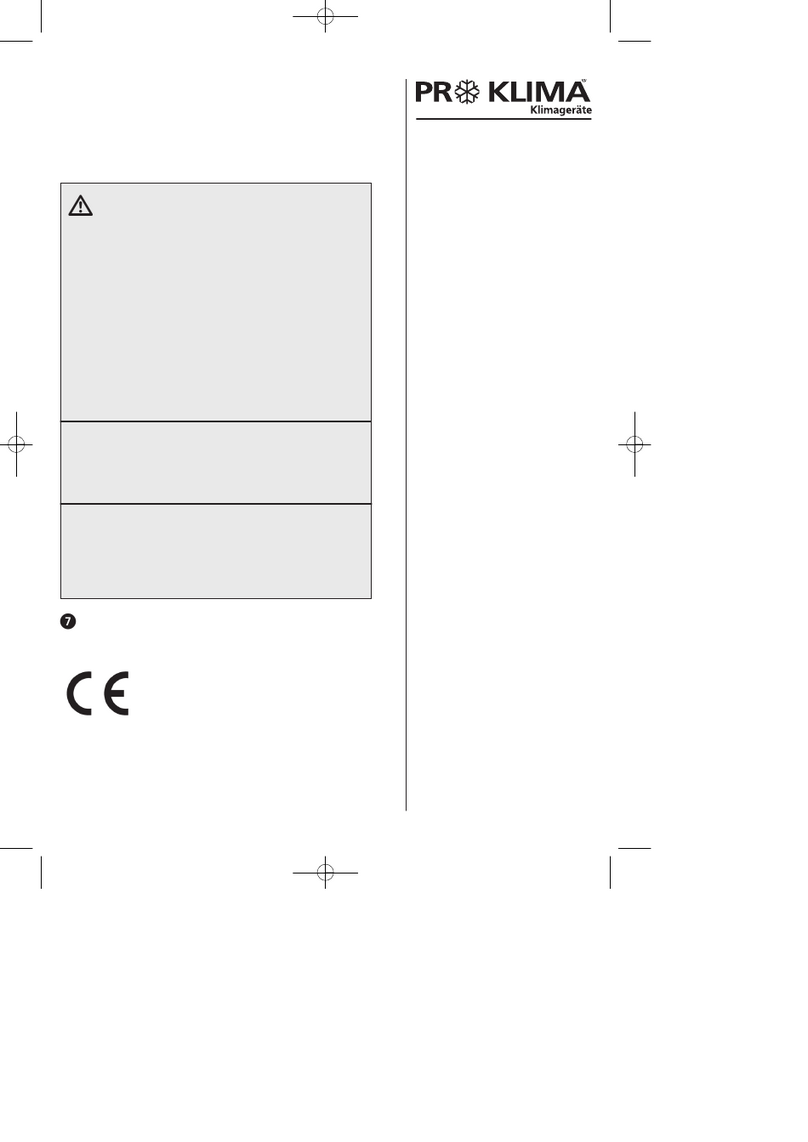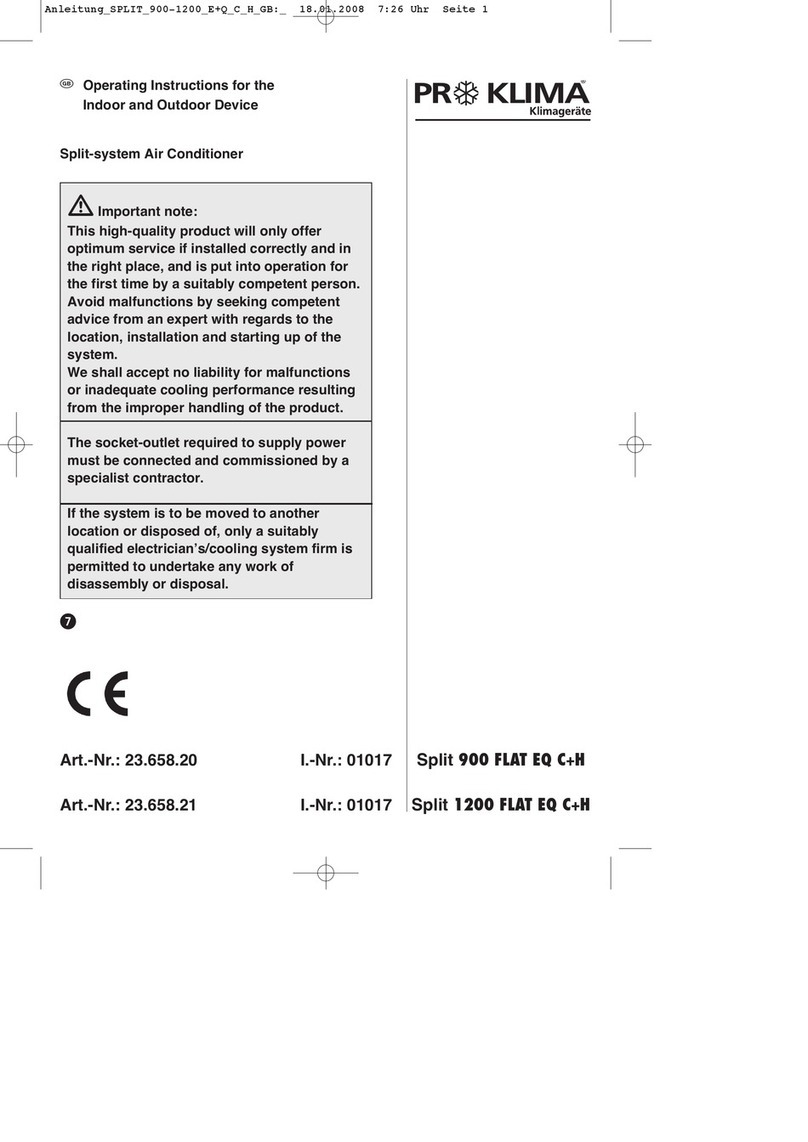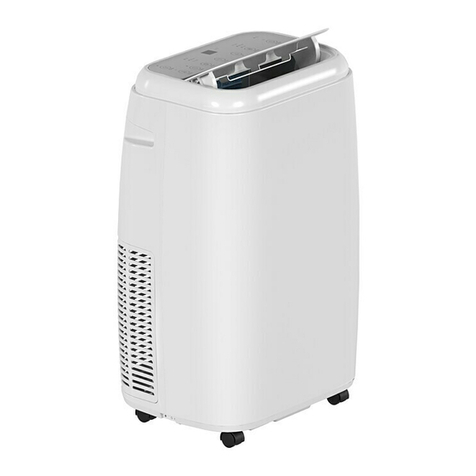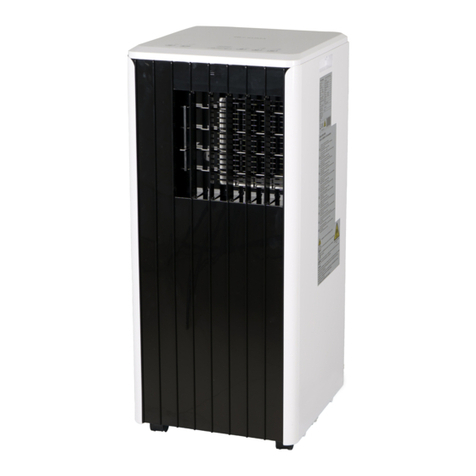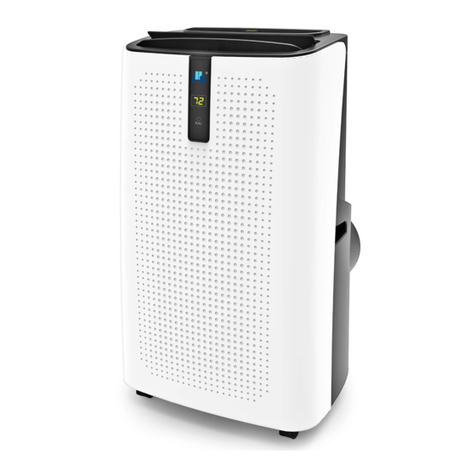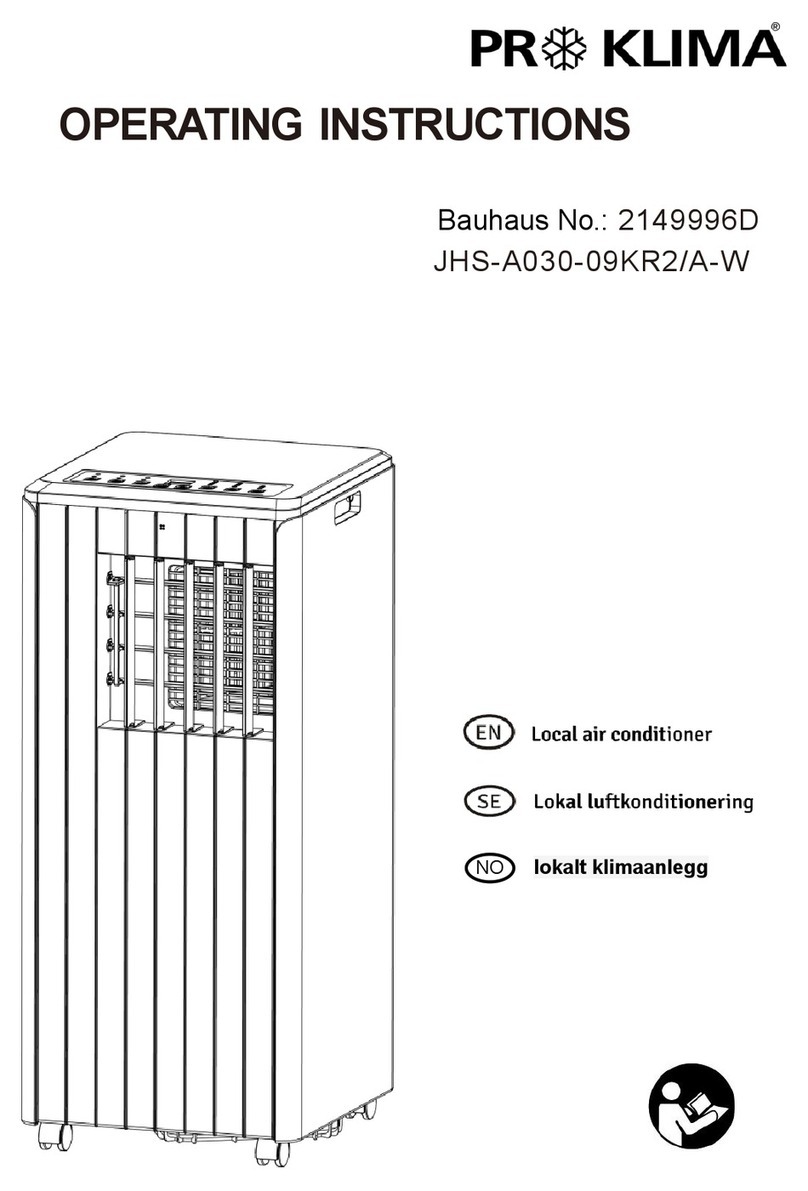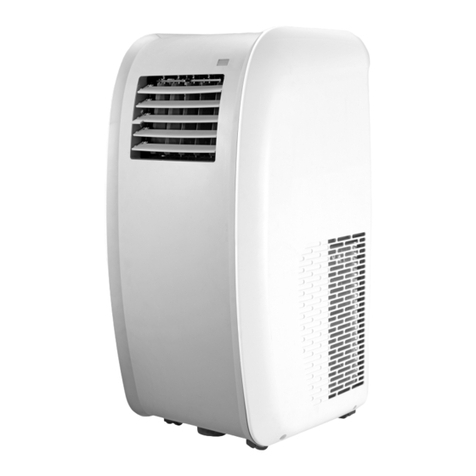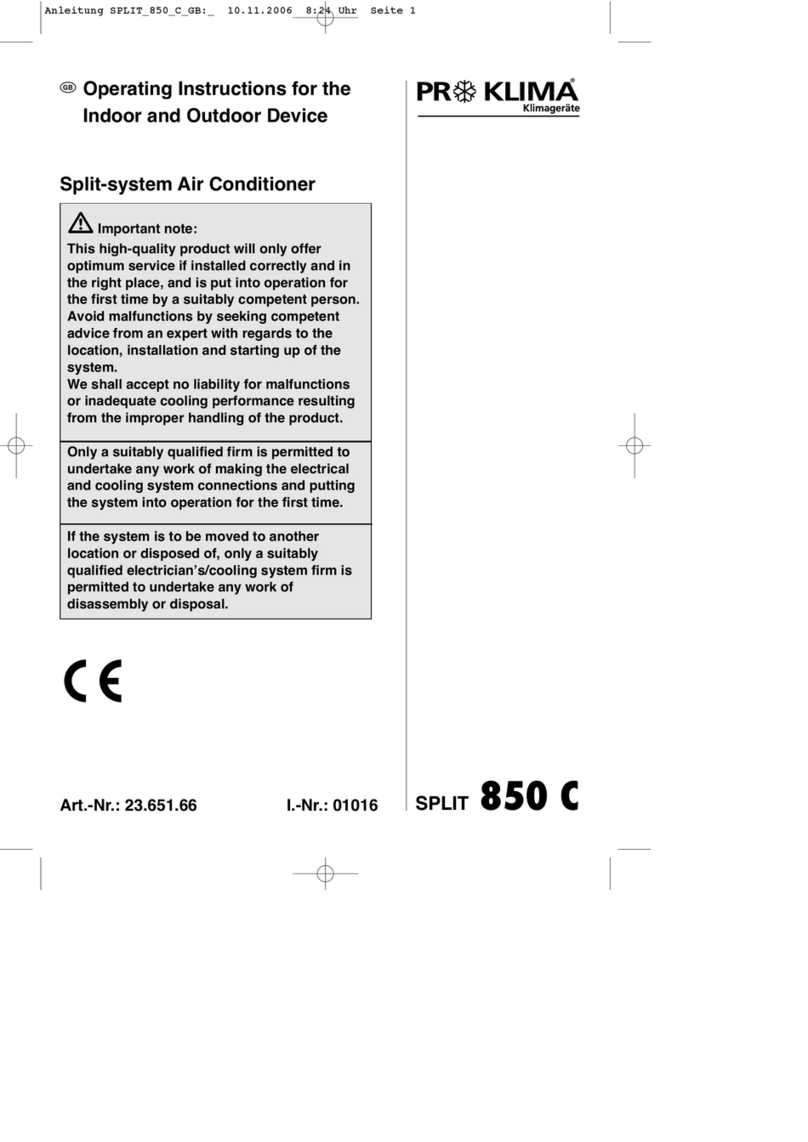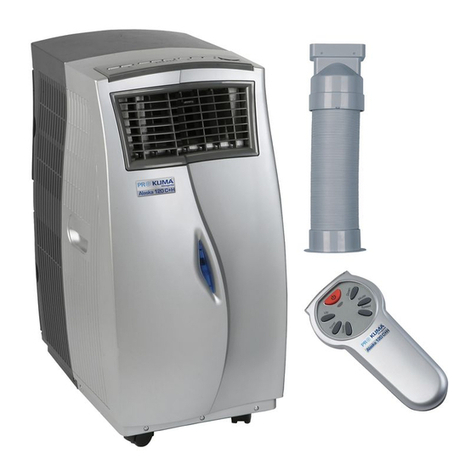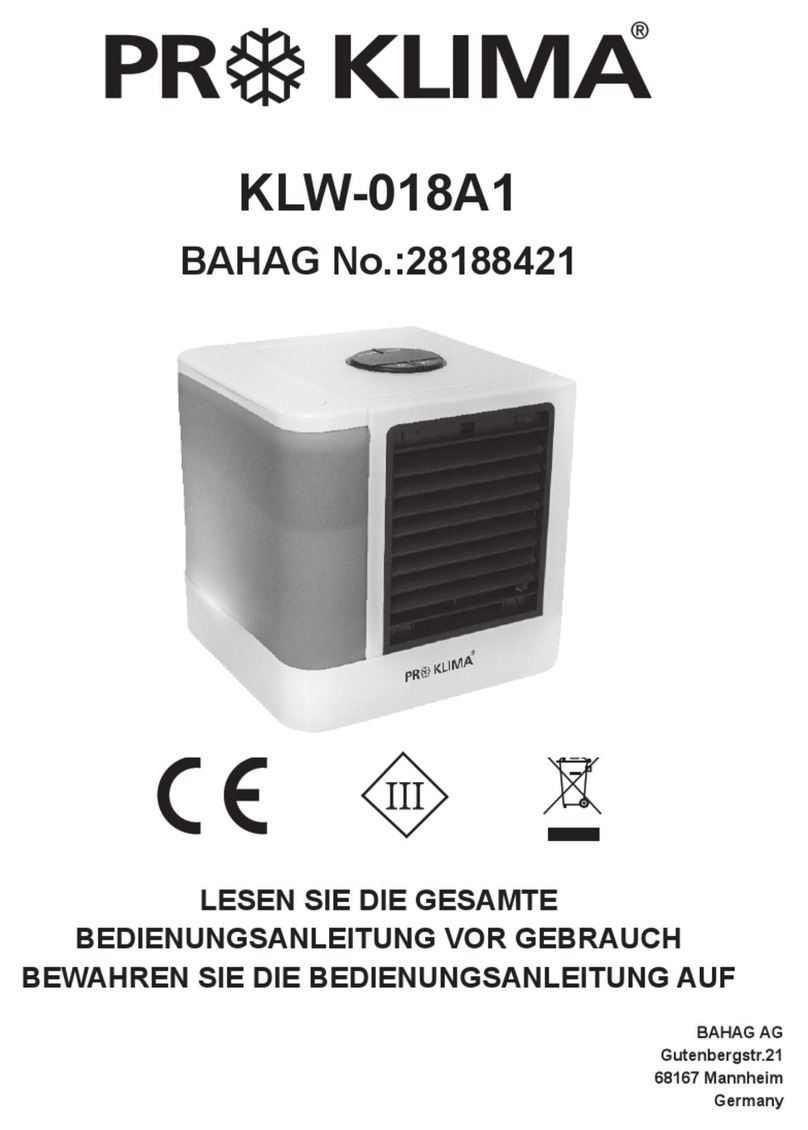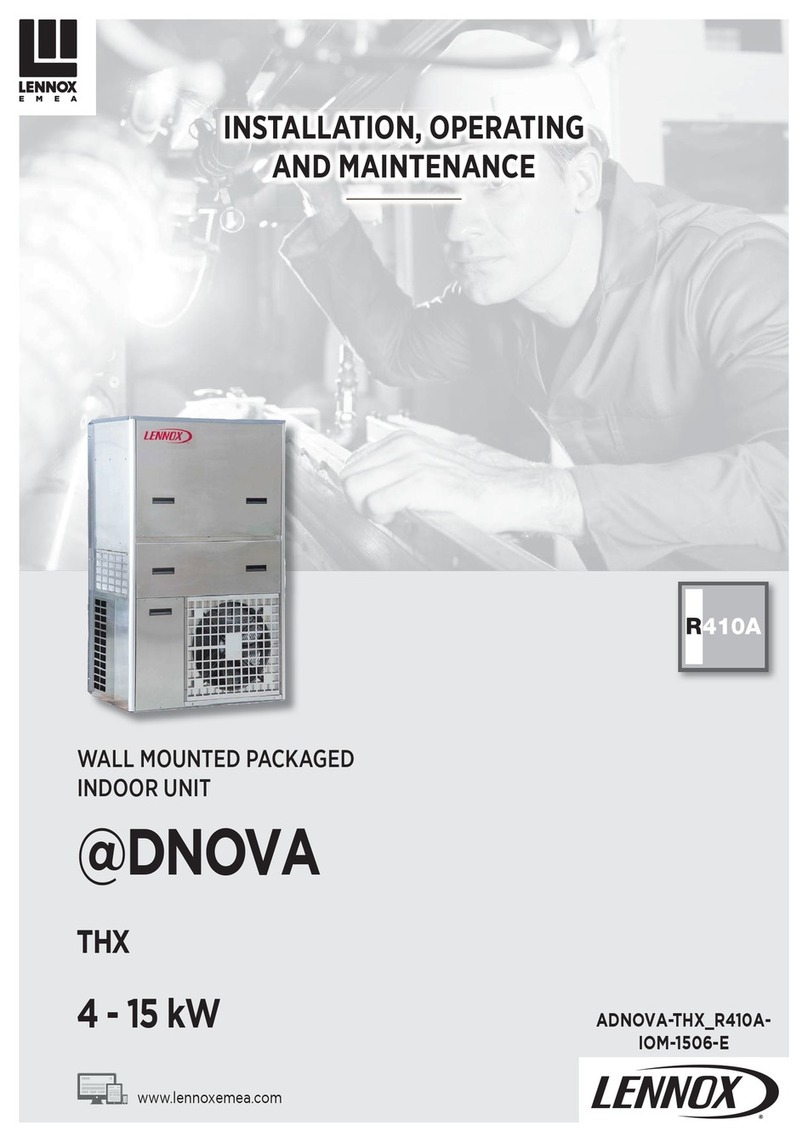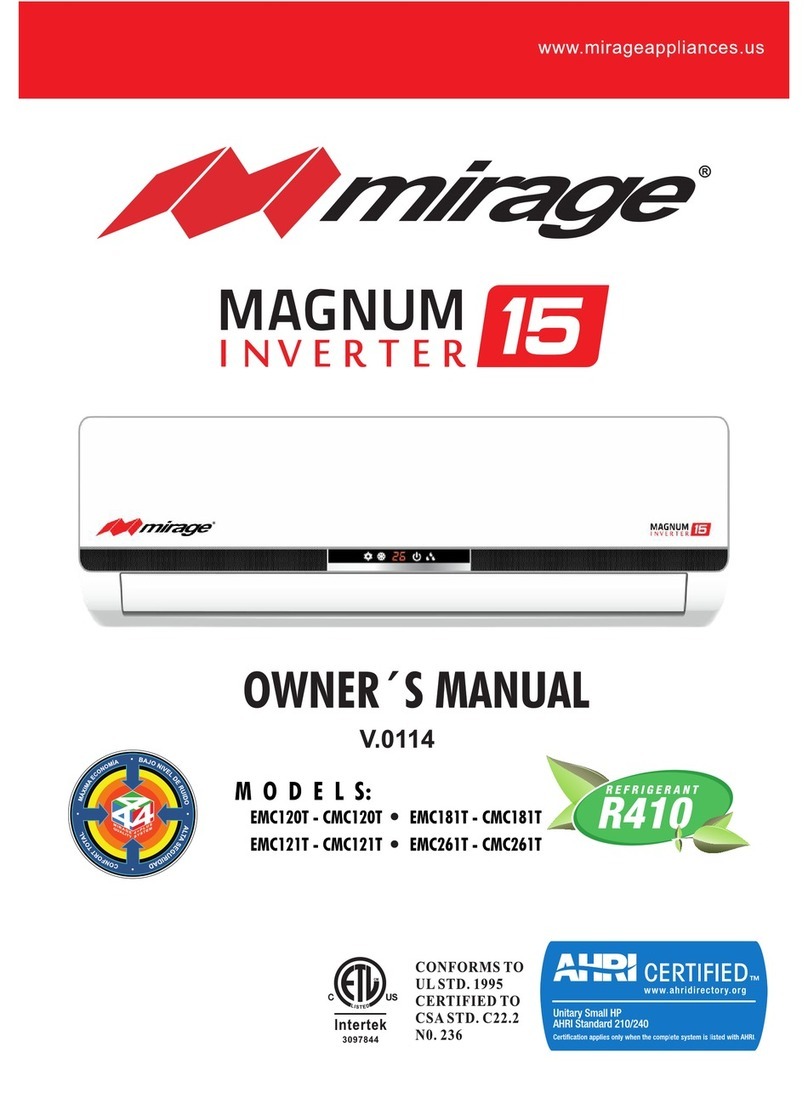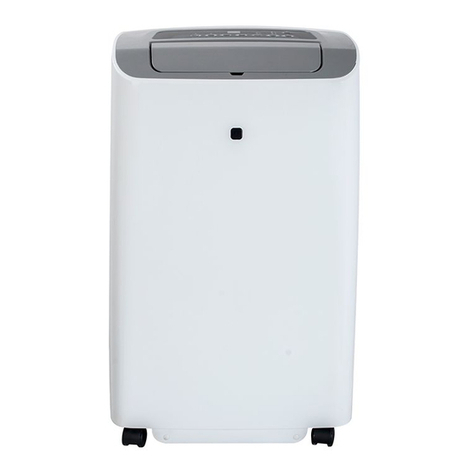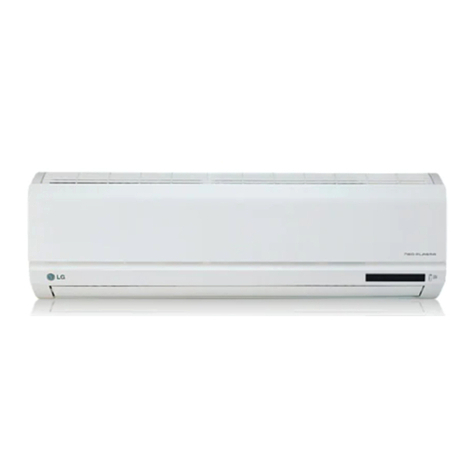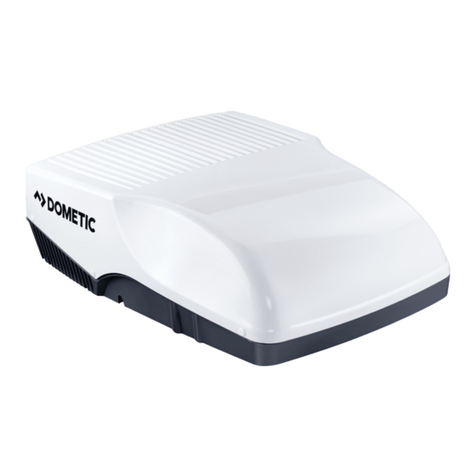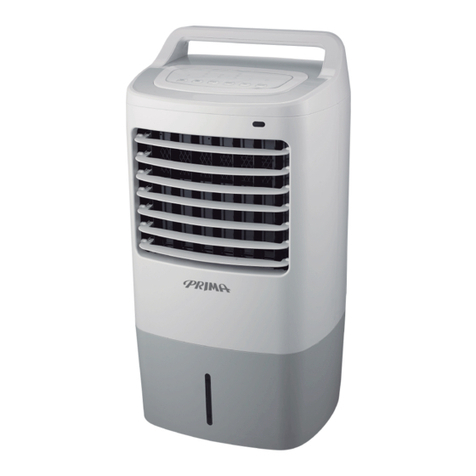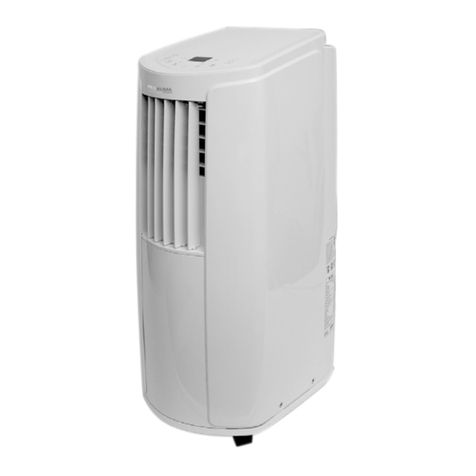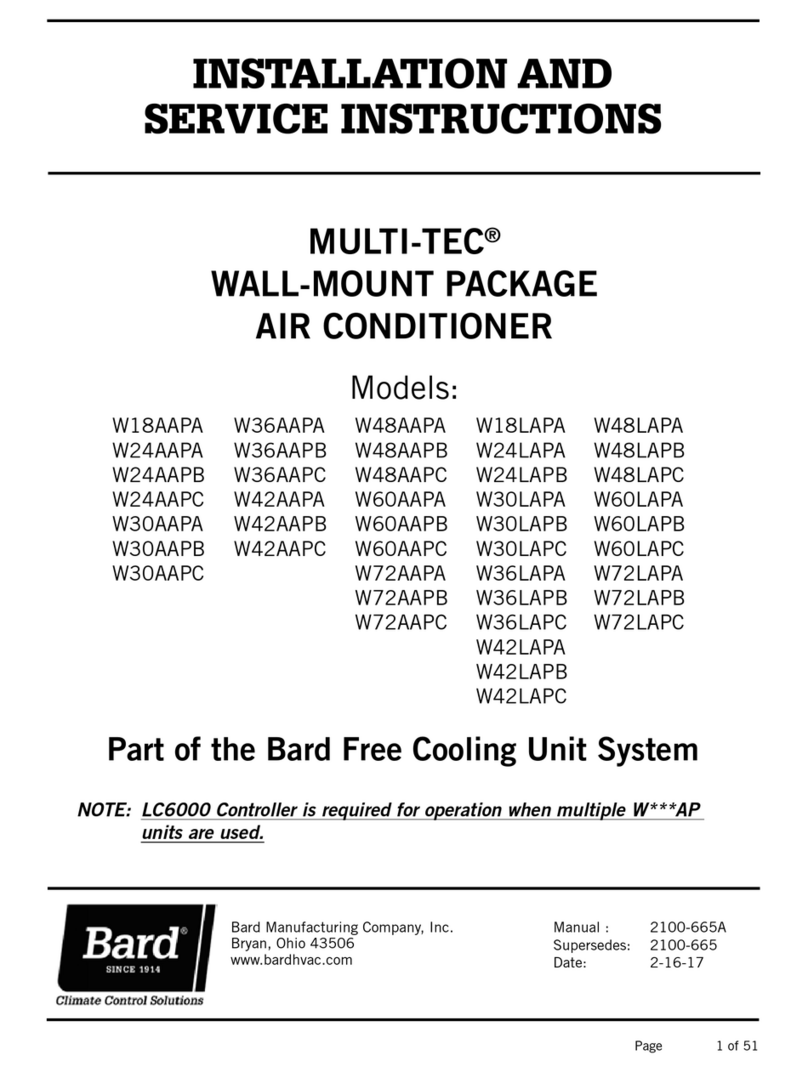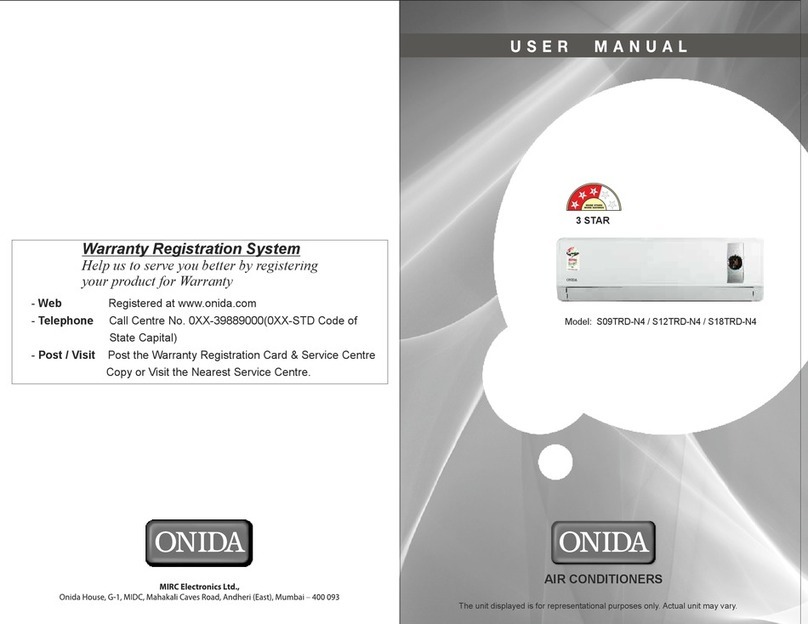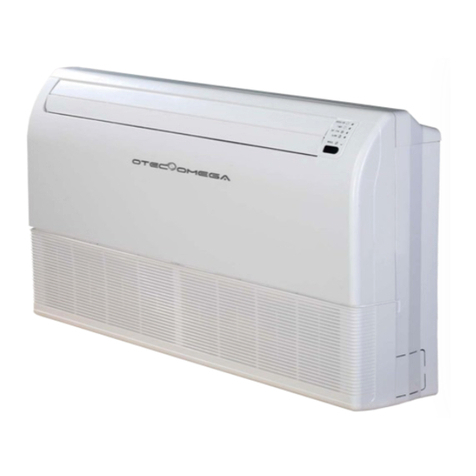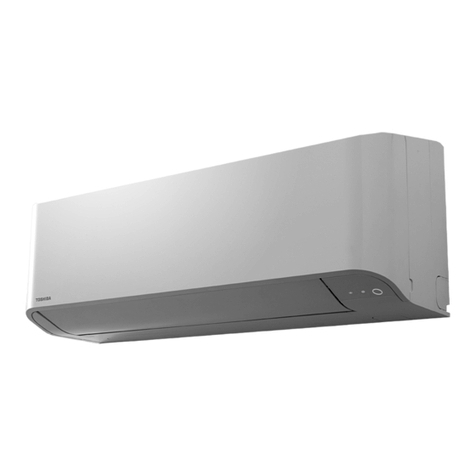Ventilatorgeschwindigkeit (□□) oder langsame
Ventilatorgeschwindigkeit (□). Entsprechend
schnell dreht sich der integrierte Ventilator.
4. Bedienfeld: Drücken Sie den Funktionstaster
„Up -Höher“ oder „Down - Niedriger“ um die von
Ihnen gewünschte Solltemperatur (17°C - 30°C)
einzustellen.
Fernbedienung: Verwenden Sie die selben
Funktionstaster.
LCD-Anzeigedisplay: Es wird die von Ihnen
gewünschte Solltemperatur angezeigt.
5. Bedienfeld: Durch Drücken beider
Funktionstasten „Höher“ und „Niedriger“ können
Sie die Temperatureinheit wechseln (°C → °F
bzw. °F →°C).
Fernbedienung: Verwenden Sie hierzu die
Funktionstaste „°C ↔ °F“.
LCD-Anzeigedisplay: Abhängig von der
Einstellung erscheint °C oder °F.
Hinweis: Im Kühlbetrieb soll die Raumtemperatur
nicht mehr als 5°C unter der Außentemperatur liegen.
B) Entfeuchtermodus (Dry)
1. Stellen Sie sicher, dass der
Kondenswasserschlauch korrekt angeschlossen
ist (s. Kapitel 8.)
2. Bedienfeld: Drücken Sie den Funktionsschalter
„Betriebsmodus“ (MODE) um die
Entfeuchterfunktion einzuschalten.
Fernbedienung: Drücken Sie den
Funktionstaster „Dry – Entfeuchtermodus“.
LCD-Anzeigedisplay: Es erscheint ein
„Wasserbehälter“.
Hinweis! Die Ventilatorgeschwindigkeit kann nicht
verändert werden. Das Gerät bläst kühle Luft nach
vorne, warme Luft nach hinten aus. Die Temperatur
kann nicht eingestellt werden. Der Abluftschlauch
darf nicht angeschlossen sein.
C) Ventilationsmodus (Fan)
1. Bedienfeld: Drücken Sie den Funktionstaster
„Betriebsmodus“ (MODE) um die
Ventilationsfunktion einzuschalten.
Fernbedienung: Drücken Sie den Funktions-
taster „Fan – Ventilatorgeschwindigkeit“.
LCD-Anzeigedisplay: Es erscheint ein
„Ventilatorsymbol“.
2. Bedienfeld: Pro Drücken des Funktionstasters
für die Ventilatorgeschwindigkeit (FAN) verändert
sich diese 3-stufig.
Fernbedienung: Drücken Sie den entsprechen-
den Funktionstaster „High, Med, Low“.
LCD-Anzeigedisplay: Es erscheint das
entsprechende Symbol für schnelle
Ventilatorgeschwindigkeit (□□□), mittlere
Ventilatorgeschwindigkeit (□□) oder langsame
Ventilatorgeschwindigkeit (□). Entsprechend
schnell dreht sich der integrierte Ventilator.
D) Einschaltverzögerung (Time on)
Mit dieser Funktion können Sie das Gerät
automatisch einschalten lassen. Voraussetzung
ist, dass das Gerät an der Spannungsversorgung
angeschlossen ist. Den „Betriebsmodus“ und die
„Ventilatorgeschwindigkeit“ können Sie entweder
vor oder nach Einstellung der
„Einschaltverzögerung“ auswählen.
Bedienfeld: Drücken Sie den dem
Funktionstaster “Time - Einschaltdauer”.
Fernbedienung: Drücken Sie den Funktions-
taster „Timer – Einschaltdauer“.
LCD-Anzeigedisplay: Es blinken „Time On“ und
die aktuell eingestellte „Einschaltverzögerung“
(beginnend mit 0,5 HR).
Bedienfeld und Fernbedienung: Pro drücken
des Funktionstasters „Up - höher“ verändert sich
die Zeiteinstellung um 0,5h nach oben. Pro
drücken des Funktionstasters „Down - niedriger“
verändert sich die Zeiteinstellung pro drücken um
0,5h nach unten. Der Einstellbereich beträgt 0,5 –
24h. Drücken Sie bei Anzeige „0,5 HR“ den
„Down - niedriger“ Taster nochmals erscheint „0
HR“ und die „Einschaltverzögerung“ ist
ausgeschaltet.
Wird länger als 5 Sekunden keiner der beiden
Funktionstaster betätigt, leuchtet im LCD-
Anzeigedisplay „Time On“ und die aktuell
eingestellte „Einschaltverzögerung“ ständig und
im Anzeigedisplay erscheint die aktuelle
Raumtemperatur. Die Einschaltverzögerung ist
jetzt gespeichert.
Bedienfeld und Fernbedienung: Drücken Sie
den Funktionstaster “Time - Einschaltdauer”
erneut, blinken im LCD-Anzeigedisplay „Time On“
und die aktuell eingestellte „Einschaltver-
zögerung“. Sie können die Zeiten der
„Einschaltverzögerung“ nachträglich verändern.
Nach Ablauf der gespeicherten
„Einschaltverzögerung“ schaltet das Gerät
automatisch ein
Bedienfeld und Fernbedienung: Um das Gerät
auszuschalten, drücken Sie den Funktionstaster
„Power – Ein/Aus“. Das Gerät schaltet aus.
Bedienfeld und Fernbedienung: Um das Gerät
vor Ablauf der gespeicherten „Einschaltver-
zögerung“ einzuschalten, drücken Sie den
Funktionstaster „Power – Ein/Aus“. Das Gerät
schaltet ein.
8
D




















